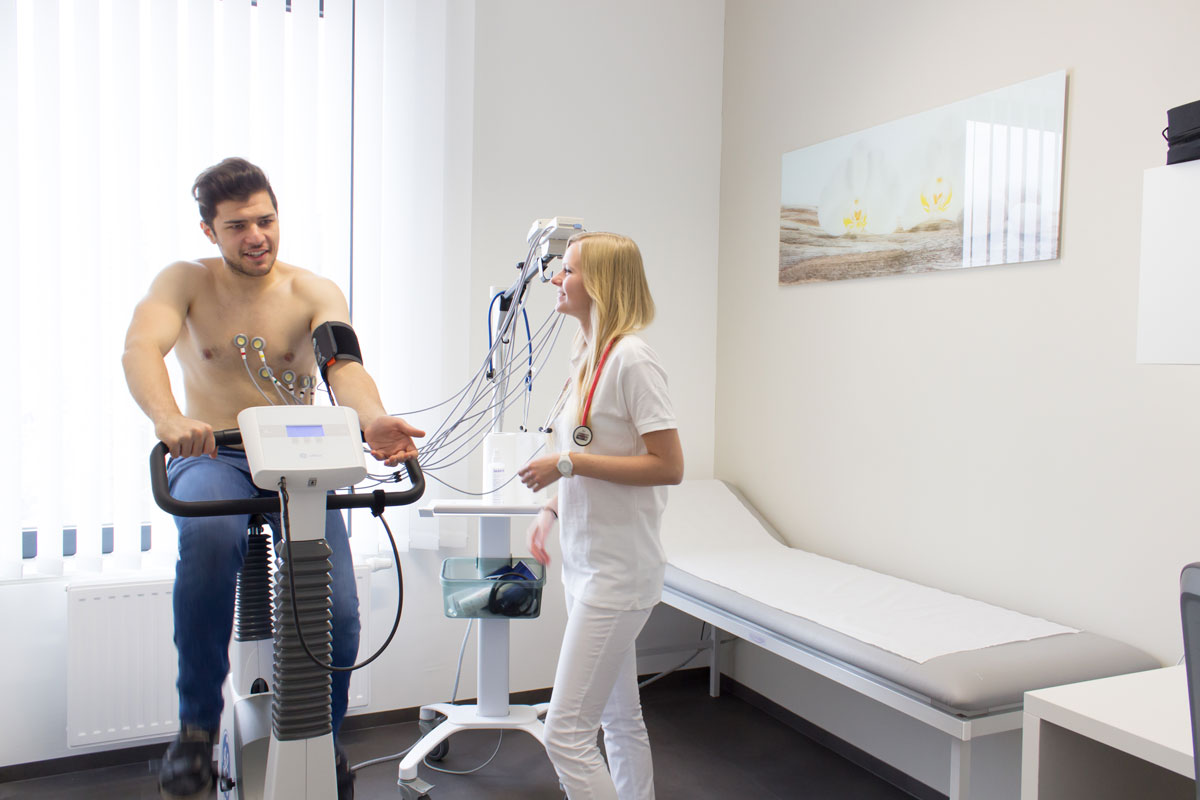All Austrian Health Insurance Funds & Private
Group-Practice Internist-Nord.at
Syeda | Gregor | Kowatschitsch | Al Bahloul
Sopira | Pakzad | Promintzer-Schifferl | Wehinger
Specialists for Internal Medicine, Cardiology, Gastroenterology, Diabetology and Hepatology
Stress ECG / Ergometry in Vienna at our Group-Practice
An electrocardiogram (ECG) records the heart’s electrical activity, displayed as curves representing the excitation of the heart. A distinction is made between a resting ECG and a stress ECG.
How does a Stress ECG work?
A stress ECG records heart activity during physical exertion. Activities are typically simulated using a treadmill or stationary bicycle (we use a bicycle). Different levels of exertion are applied to simulate walking, climbing stairs, jogging, etc., providing a detailed assessment of heart performance.
The recording is done via electrodes (small metal plates) that capture the heart’s electrical impulses. These electrodes are placed on the arms, legs, and chest. The ECG device then displays the impulses as a curve on a screen.

Procedure of a Stress ECG
For the stress ECG, we use bicycle ergometry. Every two minutes, the resistance is increased by 25 watts. During the test, blood pressure and ECG are continuously recorded. After the exertion phase, measurements are taken every two minutes during the recovery phase.
The aim is to reach the maximum heart rate during physical exertion to obtain meaningful results.
Why is a Stress ECG needed?
This test during physical activity helps to determine:
- The maximum level of physical exertion
(to calculate training frequency) - The increase in heart rate and blood pressure
(e.g., suspicion of hypertension) - Stress-induced arrhythmias
(heart rhythm disturbances) - Circulatory disorders of the heart
(e.g., coronary artery disease, chest pain, post-stent placement, or heart attack). - Heart rhythm disturbances during physical exertion
What to consider before a Stress ECG?
The test should not be performed in certain situations, such as:
- Acute heart attack
- Resting blood pressure higher than 220/110 mmHg
- Unstable angina pectoris
- Thrombosis or embolism